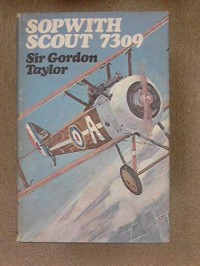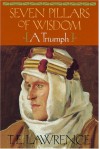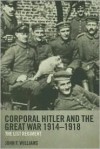Currently reading
FROM WWI - THAT MAGNIFICENT MAN IN HIS FLYING MACHINE

From the time I was a preteen, I have had an abiding interest in First World War aviation and the people who played a part in its development. And luckily enough, several months ago I came across this first-hand account by the pioneer Australian airman, Patrick Gordon Taylor, who had been a fighter pilot on the Western Front during the spring and summer of 1917.
'Sopwith Scout 7309', which was originally published about 50 years ago, is a rare book that, to my knowledge, has never been republished. It represents a way for the reader to connect with a distant time when aviation was in its infancy and the perils of flight loomed large on a regular basis. For instance, upon arriving in Britain in the latter part of 1916 from Australia, Taylor, after gaining acceptance into the Royal Flying Corps (RFC) was sent to Netheravon for his initial flight training. This entailed him being led by his instructor to a Maurice Farman pusher aircraft, which, in appearance looked much like a fragile box kite with a small, narrow bathtub-shaped cockpit, fixed landing gear and wings. The instructor was a man of few words. Taylor had anticipated being given a more ordered, systematic introduction to the theories of flight. But his first experience airborne proved to be rather sketchy with the instructor taking Taylor aloft, flying round the airfield a few times while putting the plane through a few turns and subtle maneuvers and leaving Taylor in utter confusion. Then the instructor --- who was sitting in the front seat --- cuts the engine, puts the plane into a dive, and shouted to Taylor: "You land it!" Taylor, despite his obvious lack of aeronautical acumen, put his hands to the controls in front of him and his feet on the rudder bar. The dive steepened and Taylor, in desperation, pulled back the control column, which checked the plane's descent and put it on a more or less even keel. At that moment, "the engine came on, the controls were snatched out of [Taylor's] hands and a savage shout came back to [him] from the instructor, 'Bloody awful!' " The plane climbed again, made another circuit of the airfield, and landed. This time, the instructor took careful notice of Taylor and adopting a conciliatory tone, said to him: 'That's better.'
Minutes later, instructor and pupil went aloft yet again. This time, Taylor received some cursory instruction in flying a plane straight and level. Taylor took to that rather well. A short time later, they returned to the airfield, where the instructor landed the plane and taxied it over to the hangars. Then the instructor shut the engine off, disembarked from the cockpit, and promptly walked away.
The following day, the instructor gave Taylor a similar training experience. What made it especially mortifying for Taylor was when the instructor indicated that he fly the plane by himself. This was too much! Taylor cut off the engine, stepped out of the cockpit. The instructor was yelling at him hysterically, demanding to know why he stopped the engine. Taylor, in response, shouted back 'I'm not going solo.' Furthermore, he writes: "I couldn't fly the aeroplane and I wouldn't attempt to. I had never done a take-off, nor a landing without interference, and during the total hour and a half of this nightmare experience I had only briefly flown the machine straight and level even. I hadn't come all the way from my home in Australia to kill myself at an instructor's orders." Taylor expected to be arrested. But to his shock and surprise, the instructor said to him in an seemingly friendly voice: 'What do you want to do, then?' Taylor replied that he wanted another instructor. Later that day, he was put in the hands of a new instructor, who was much more conscientious and dedicated, and patiently helped Taylor to become a proficient pilot. Reading that part of the book again made clear to me how utterly HAPHAZARD flight training was for pilot trainees in Britain at that stage of the war. There was as yet no systematic program for training pilots. (Taylor shares with the reader that he later discovered that his "first instructor at Netheravon had been a nervous wreck. After doing quite well in France for some months in a machine of poor performance and inadequate armament, his spirit had been broken and he was returned to Home Establishment. There, in England, he became a victim of the system and was posted to Netheravon as an instructor. He was terrified of flying, and his one frantic aim was to get his pupils off solo as soon as possible, so that he wouldn't have to fly with them.")
Taylor, after completing advanced training, was posted to France in February 1917 with 66 Squadron, which was a new unit. The plane they flew -- the Sopwith Pup --- while a nimble and maneuverable fighter, was hardly a match for the German Albatros fighters, which were faster, more heavily armed (2 machine guns to the Pup's one Vickers gun), and easily capable of outdiving a Pup in combat. Notwithstanding that, Taylor was determined to exploit to the full the Pup's few advantages over the Albatros. The book goes on to give the reader a rich and varied look at Taylor's combat service at the Front, which, despite a few close calls, lasted through September 1917. Thereupon Taylor was given a rest and sent back to Britain. He had defied the odds, and in the process, developed a deep love for flying which would stand him in good stead for the rest of his life.
"SOPWITH SCOUT 7309" also has several photos showing the type of life Taylor led with 66 Squadron, as well as various RFC planes and pilots, some of whom --- like Albert Ball and Billy Bishop --- acquired worldwide fame because of their prowess as high-scoring fighter aces. Simply put, this is a terrific book for learning about the life of a First World War pilot.














 5
5
 1
1